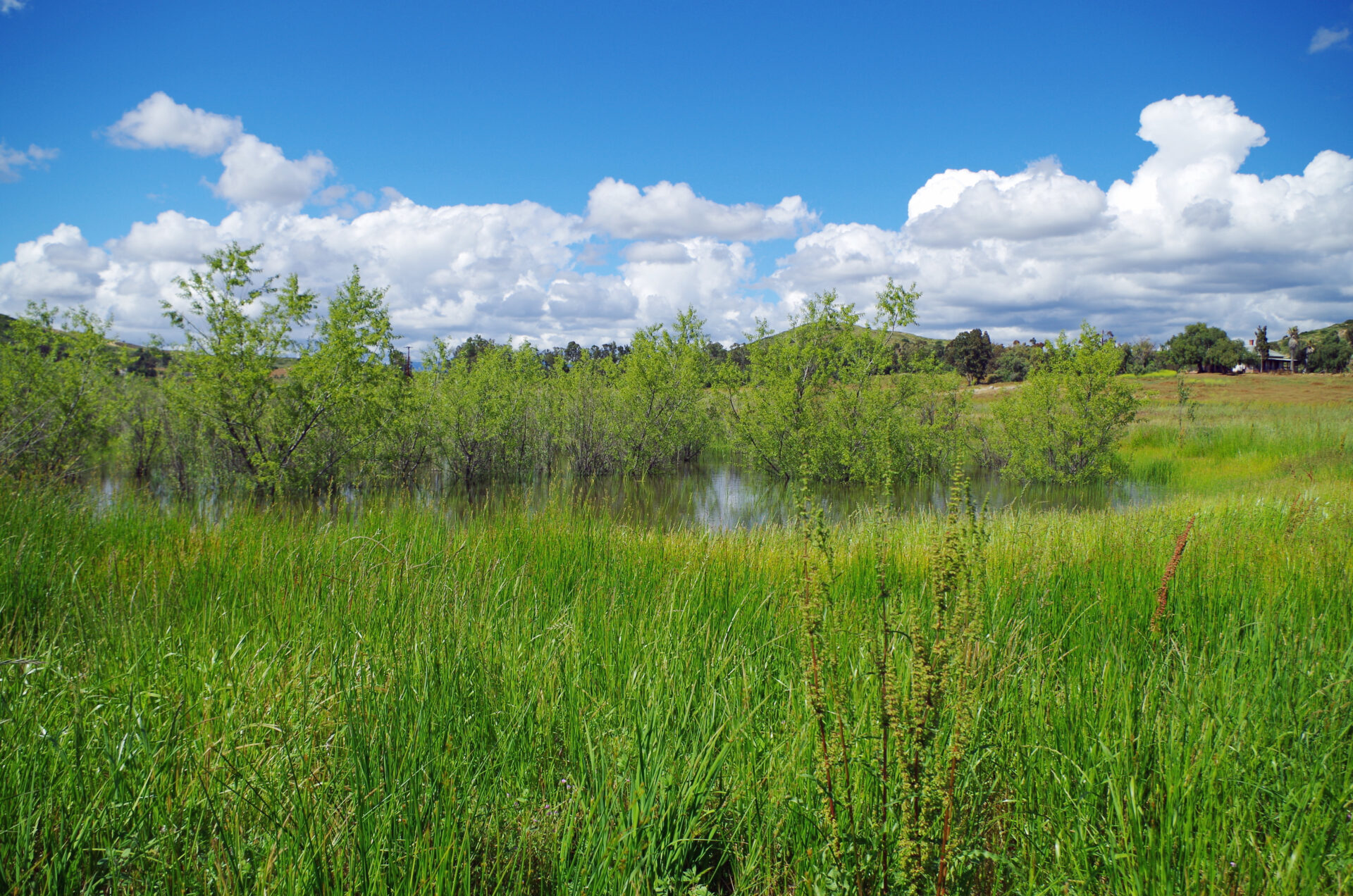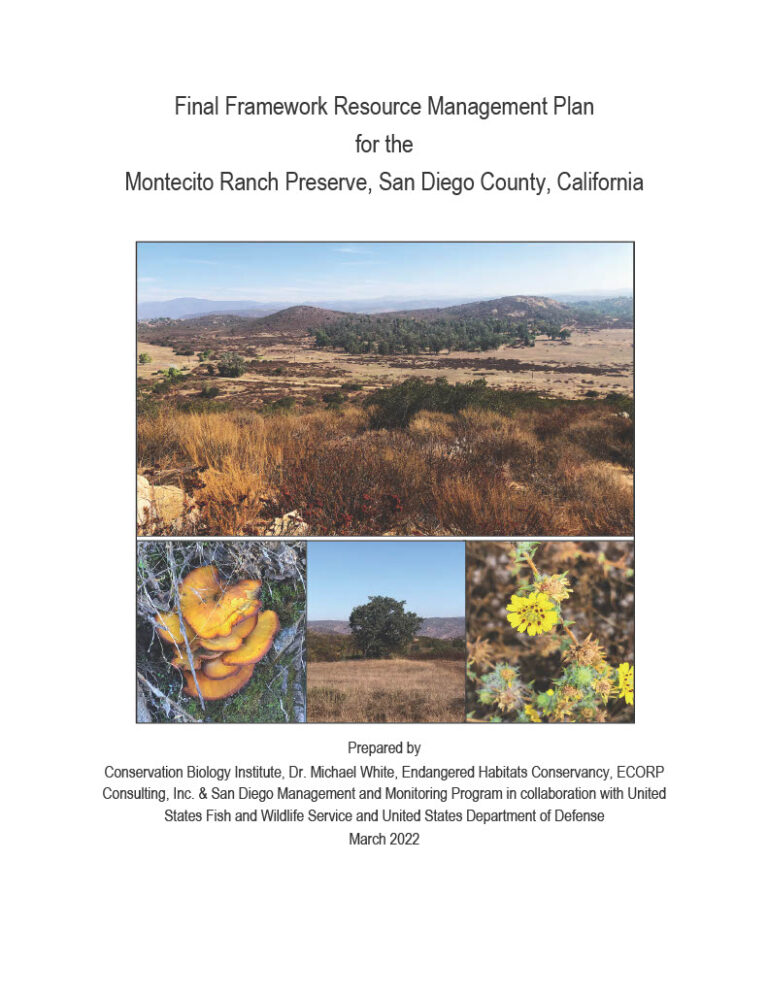The Conservation Biology Institute (CBI), Dr. Michael White, Endangered Habitats Conservancy
(EHC), ECORP Consulting, Inc., and the San Diego Management and Monitoring Program
(SDMMP) in coordination with the United States Fish and Wildlife Service (USFWS) and
California Department of Fish and Wildlife (CDFW) (collectively referred to as the Wildlife
Agencies), and the United States Department of Defense (DOD) developed a Framework Resource
Management Plan (F-RMP) for the Montecito Ranch Preserve (Preserve). The F-RMP aligns
preserve-level management and monitoring with the regional Management and Monitoring
Strategic Plan (MSP or MSP Roadmap) for conserved lands in western San Diego County
(SDMMP and TNC 2017). The MSP Roadmap provides regional and preserve-level goals and
objectives for prioritized species, vegetation communities, and threats, and includes
recommendations from regional planning documents (e.g., Connectivity Monitoring Strategic Plan [SDMMP 2011], Invasive Plant Strategic Plan [CBI et al. 2012]).
The MSP Roadmap provides a framework for prioritizing, funding, and managing species and vegetation communities on conserved lands in the Management Strategic Plan Area (MSPA) and does not replace any forthcoming Natural Communities Conservation Plan (NCCP) obligations or requirements. Priorities, goals, and objectives in the MSP Roadmap are advisory and meant to be consistent with the intent of regional NCCP plans, but there may be preserve-level management concerns and future NCCP obligations not addressed in the MSP Roadmap that are important to fulfill (SDMMP and TNC 2017). In preparing the F-RMP, we used existing Preserve-specific biological documents, results of 2020-2021 rapid assessment field surveys, and the MSP Roadmap to determine whether any significant occurrences of species lie within the Preserve, and we reviewed goals and objectives for species, vegetation communities, and threats/stressors to develop or refine Preserve-specific goals, objectives, and implementation tasks.
The F-RMP will guide management and monitoring of the Preserve. Development of the F-RMP included:
- Reviewing existing biological surveys, studies, and documents.
- Communicating with local and regional experts and entities.
- Incorporating existing biological and stewardship spatial information provided by local and regional experts and entities.
- Refining existing vegetation mapping.
- Mapping and prioritizing threats and stewardship issues.
- Surveying for selected MSP priority species1,2 and United States Marine Corps (USMC) focal species.
- Identifying priorities and timelines for detected MSP and USMC focal species.
- Developing or refining Area-Specific Management Directives (ASMDs).
- Providing a structure for adding to the F-RMP over time in an adaptive manner.





